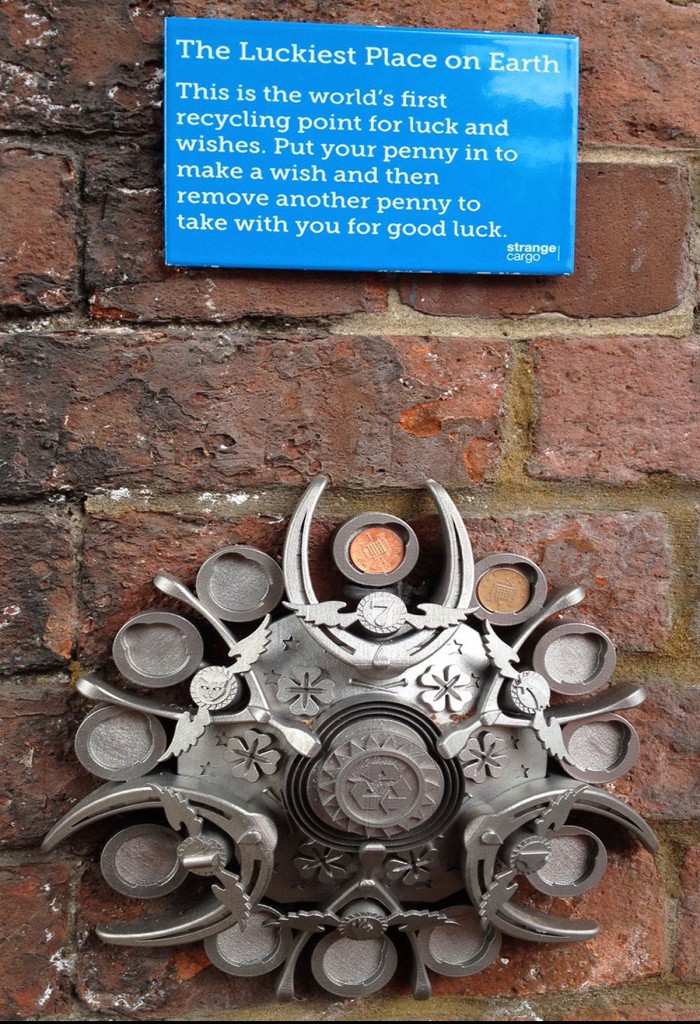3D Printed Art Offers Luck to Passersby

This 3D printed piece offers a chance for people to take home a little luck. Courtesy of Renishaw.
Latest News
October 20, 2014
Additive manufacturing (AM) is hard at work every day helping reduce parts weight for aerospace, building new options for medical treatment, and a million other uses that will probably go unseen. Some designs manage to leverage the power of AM in practical ways that might also be aesthetically pleasing, but the look of a printed part isn’t usually the point.
In art, appearance is rather more important, and the collision between AM and art has produced a number of unique pieces. The same design freedom that makes 3D printing an invaluable tool for manufacturing, makes it a remarkable instrument for art. A recent piece, designed by Strange Cargo and printed by Renishaw, offers luck to passersby.
 This 3D printed art piece offers people a chance to take home a little luck in their pockets. Courtesy of Renishaw.
This 3D printed art piece offers people a chance to take home a little luck in their pockets. Courtesy of Renishaw.The piece in question, named The Luckiest Place on Earth, was printed out of titanium on a Renishaw AM250 for the Folkestone Triennial public art show held in Folkestone, England. If the name seems odd, the show is held once every three years, and allows artists to use the town itself as their canvas or display area.
“We’re incredibly pleased with how accurately our additive manufacturing machine has been able to reproduce Strange Cargo’s unusual and alluring design for the luck and wish recycling point,” said Chris Pockett, head of communications at Renishaw. “The piece is yet another example of the potential of 3D printing when it comes to design freedom. 3D printing is no longer just a prototyping method; it’s a practical solution for producing highly complex one-off and small batch builds.”
Those who chance upon the Luckiest Place on Earth are given the opportunity to add a penny to the display, and then take a penny left by someone else as a little piece of good luck in your pocket.
Strange Cargo’s artwork is set under the Folkestone Central Railway Bridge, guarded by four sculptures on plinths. Each sculpture represents a Folkestone resident, chosen at random from 700 applicants. The winners were scanned, and their likenesses reproduced in 3D printed nylon.
Below you’ll find a video about the Folkestone Triennial.
Sources: Folkestone Triennial, Renishaw
Subscribe to our FREE magazine, FREE email newsletters or both!
Latest News
About the Author
John NewmanJohn Newman is a Digital Engineering contributor who focuses on 3D printing. Contact him via [email protected] and read his posts on Rapid Ready Technology.
Follow DE





